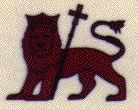Glossary (Ramkavar – Sembat the Constable)
Ramkavar
Derived from the Armenakan party, founded in 1885 in Van, Ramkavar is considered the oldest of the Armenian political parties. Inspired by the ideas of Mkrtich Portugalian, the members of Armenakan party imported arms into the Western Armenia and advocated a future general uprising. Gradually transformed into a liberal party, Armenakan became Ramkavar in 1921.
Ruben, Prince of Cilicia
Armenian prince, founder of the Rubenids dynasty. He ruled Cilicia from 1080 to 1095. His origins and life before coming to power in Cilicia are obscure. Some historians pretend he was offspring of the royal families of Bagratuni and Artsruni.
Rubenids
 Arms of Rubenids dynasty
Arms of Rubenids dynasty
Dynasty of the Armenian princes and kings that ruled in the Cilician Kingdom from 1080 to 1226.
Rusa II
(685-665 BC) Armenian King of Arartouni dynasty. He built the forteress of Teishebaini (the city of Teisheba, God of Storms) at Karmir Blur.
Sanatruk
King of Armenia (34-68). Following the tradition, he adopted Christianity together with his uncle, King Abgar, but then apostatized and persecuted the Christians in the cruelest fashion. After putting to death his Christian daughter Saandukt , he ordered to flay alive the Apostle St. Bartholomew.
Sardarapat
 The memorial dedicated to the Armenian victory at the battle of Sardarabad in Armavir, Armenia
The memorial dedicated to the Armenian victory at the battle of Sardarabad in Armavir, Armenia
Town in the Ararat valley in the western Republic of Armenia. On May 28, 1918 Sardarapat became scene of the renowned battle, in which the heavily outnumbered Armenian forces defeated the regular Turkish army. On the same day, the independent Republic of Armenia was proclaimed. The May 28 is celebrated to this day as national feast-day of the Republic of Armenia.
Saryan, Martiros
 Martiros Saryan
Martiros Saryan
(1880-1972) Armenian artist, native of Nakhichevan. Recognized master of oil, gouache, water color and charcoal, he is considered patriarch of modern Armenian painting. He created some 4000 drawings and paintings.
Sargsyan, Vazgen
 Vazgen Sargsyan
Vazgen Sargsyan
(1959-1999) Armenian politician, Minister of Defense and Prime Minister in 1999. He made an important contribution to the foundation of the Armenian armed forces. He was killed in October, 1999 during the terrorist attack in the Parliament building in Yerevan.
Sarkis (Vest Sarkis)
Prince, Armenian noble in the court of Gagik II Bagratuni. He became symbol of perfidy, when he signed a petition of the Armenian grandees to the Emperor Constantine IX recognizing the Byzantine authority over Armenia in 1044. That marked the end of the Armenian Kingdom in the Greater Armenia.
Saroyan, William
 William Saroyan(1908-1981) American Armenian writer of short stories, novels and plays. Among his best works are the novels The Human Comedy and My Name is Aram, and the play The Time of Your Life.
William Saroyan(1908-1981) American Armenian writer of short stories, novels and plays. Among his best works are the novels The Human Comedy and My Name is Aram, and the play The Time of Your Life.
Sassun
(Sanassun) One of the cantons of the Aghdznik province of Armenia (present-day Turkey). Etymologically, Sasun (Sanassun) derived from Sanassar (name of one of the sons of the Assyrian King Senekerim who, according to Bible, flew to Armenia escaping the King Nebuchaddnezzar). The canton was situated on the wooded slopes of the Armenian Taurus. In different periods of the Armenian history, the Armenians of Sassun served as example of courage and stoic resistance to the enemy. Such reputation was reflected in David of Sassun, a medieval Armenian epic poem.
Sayat Nova
 Sayat Nova, by Hrachya Rukhkyan, 1960
Sayat Nova, by Hrachya Rukhkyan, 1960
(1712-1795) Outstanding Armenian troubadour and poet, author of many popular songs. He was killed by the Persians in 1795 and buried in the monastery of St. Karapet in Tiflis, Georgia.
Sebeos
Armenian historian of 7th century. His History has particular importance for the study of the Armenian history of the 6-7th centuries, and also of the events taking place in neighboring Persia and Byzantine Empire.
Sembat Bagratuni, Sparapet
Also known as Confessor, he was father of Ashot I who restored the Armenian Kingdom in 885. After the uprising in Sassun in 851, the governors of Caliph in Armenia arrested many of the Armenian leaders and exiled them to Baghdad in attempt to make them abandon the Christian faith. Despite cruel tortures, Sembat the Sparapet remained faithful to Christianity, and was murdered in 855.
Sembat I
King of Armenia (890-913) of Bagratuni dynasty, son of Ashot I and father of Ashot II Erkat. His ruling was a period of non-stop wars against the Arab conquerors and the rebelled Armenian lords. He fought with changeable success against Afshin, Caliph’s representative in Atrpatakan, but was defeated by Yussouf, Afshin’s brother. Some of his influential nobles like Gaguik Artsrouni and Sparabet Ashot betrayed him proclaiming them selves independent from the central power. In 913, Sembat, isolated and deprived of support, surrendered to Yussouf and was murdered.
Sembat II
King of Armenia (977-990), son of Ashot III. He ruled in Ani. He fortified the city and began the construction of a sumptuous cathedral of Ani.
Sembat the Constable
(1208-1276) Illustrious commander, diplomat and historian. He was brother of King Hetum I. He wrote the Code of Laws (1265), The Annals (1276), and a number of philosophical and historical poems. He aslo translated from French The Assises d’Antioche.







